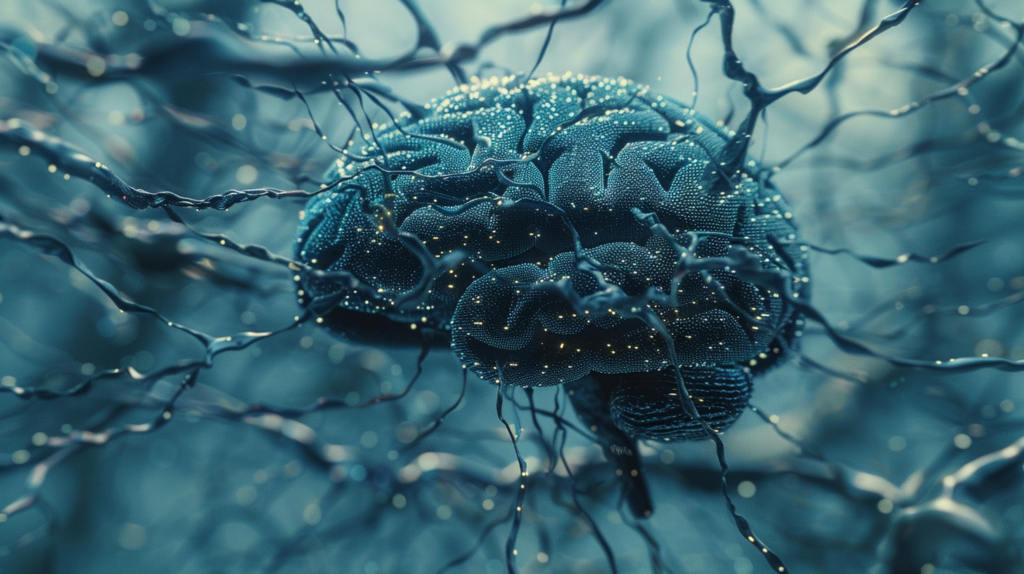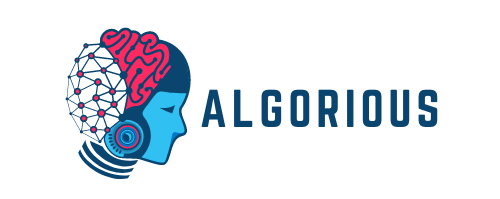Unleashing the Power of Generative AI – A Comprehensive Guide
Generative AI has emerged as a groundbreaking technology, marking a pivotal shift in the computational world. Unlike the traditional computers that operated as sophisticated calculators designed for specific tasks, today’s computing technology has evolved dramatically. Computers now possess the ability to learn, think, and even communicate in ways that resemble human cognitive functions. This advancement is what we define as generative AI.
Table of Contents

The Essence of Generative AI
Generative AI is characterized by its ability to create new, original content, extending beyond conventional AI functionalities such as machine learning and computer vision. This technology, which has been an integral part of our daily lives in various forms—ranging from YouTube recommendations to facilitating credit card transactions—now encompasses more advanced capabilities. A prime example of generative AI in action is the Generative Pretrained Transformer (GPT), a large language model known for generating human-like text. These models represent a significant leap, enabling machines to perform intellectual and creative tasks that were once considered exclusively human domains.
The Impact of Generative AI
The advent of generative AI heralds a new era in technology with the potential to profoundly influence every individual and business globally. Its capabilities are rapidly advancing, promising transformative effects across various sectors. In education, for instance, AI tools could revolutionize grading systems, content generation, and personalized student support. In the business realm, AI can enhance service delivery and client engagement. Furthermore, developers can leverage these models to create AI-powered products that augment human capabilities.
Navigating the AI Revolution

The journey of human advancement has seen numerous revolutions, from mastering fire to the invention of the printing press. Yet, the AI revolution stands out due to its instantaneous global reach and impact. It’s crucial to distinguish between the underlying models of generative AI and the products built upon them, as users interact with these products, which incorporate additional capabilities and data beyond the models themselves.
Generative AI signifies a monumental stride in technological evolution, offering to reshape numerous aspects of our lives. The synergy between humans and AI holds unparalleled potential. By deepening our understanding of generative AI, we can better harness its benefits and navigate the challenges it presents, ensuring a future where technology and humanity coalesce harmoniously.

Generative AI is at the forefront of the AI technology revolution, boasting the unparalleled ability to generate new and original content. This capability sets it apart from traditional AI, which focuses on identifying or classifying existing information. The potential of generative AI spans across various industries, transforming everything from how we interact with language models to how we recognize images.
The Rise of Large Language Models (LLMs)
At the heart of this transformative technology are Large Language Models (LLMs), which epitomize the bridge between sophisticated AI algorithms and everyday users. LLMs, such as OpenAI’s Chat GPT, communicate in human language, making complex AI concepts accessible to those without a technical background. The Transformer architecture, a pivotal innovation behind Chat GPT, enables this fluency and user-friendly interaction, significantly contributing to the AI revolution.
Neural Networks: The Brain Behind AI

Central to LLMs is the concept of an artificial neural network, akin to a vast web of interconnected parameters functioning similarly to the human brain’s network of neurons. These networks process data numerically, allowing the AI to interpret and generate content, whether text or images, through numerical representations. This evolution from simple computational tasks to learning, thinking, and communicating mirrors human cognitive abilities, marking a significant leap in computer capabilities.
The Practical Impacts of Generative AI
Generative AI’s influence extends beyond the theoretical, with numerous commercial products stemming from this technology. These range from complex systems requiring technical expertise to user-friendly platforms accessible to a broader audience. The integration of AI co-pilots and chat interfaces in some products underscores the technology’s versatility and its role in making generative AI approachable for various applications.
Categorizing Generative AI Models
Understanding generative AI involves recognizing the diversity of models based on the type of content they produce. For instance, text-to-text models like GPT-4 process and generate textual content, including natural language or structured formats like code, JSON, or HTML. Conversely, text-to-image models create visual content based on textual descriptions, showcasing the wide-ranging capabilities of generative AI.
The emergence of generative AI and the development of Large Language Models have heralded a new chapter in AI technology. By comprehending and utilizing these technologies, individuals and organizations can unlock unprecedented opportunities in the ever-evolving landscape of AI.

Imagine your brain is like a big, busy city full of tiny messengers running around. These messengers are called neurons, and just like in your brain, a computer can have a pretend “brain” made up of artificial messengers. This pretend brain is what we call Generative AI, and it’s especially good at playing with words and sentences, kind of like how you might learn to write stories in school.
The Training Process of LLMs
Think about how you learn new words and how to put them into sentences. You listen, you read, and then you try it out yourself, right? Generative AI learns in a similar way but with a lot more information. It reads lots and lots of text from books, websites, and all sorts of places. Then, it practices by guessing what words come next in sentences it’s never seen before. When it guesses right, it gets a little virtual “pat on the back,” and when it’s wrong, it tries to remember so it doesn’t make the same mistake again. This guessing game helps it get better over time.
Now, let’s create a simple image to show how this AI brain learns. Imagine we’re drawing a picture of a city where messages (or guesses about words) travel from one building (input) to another (output), and then feedback (like the virtual pat on the back or correction) helps it learn. This process is called “backpropagation” in the AI world, but you can think of it as the AI figuring out the best paths for its messengers based on what works and what doesn’t.
Let’s draw a basic picture of a neural network with backpropagation to explain this learning process.

Here’s a simple picture to explain how Generative AI, like the one we talked about, learns:
- Input Layer (Words): This is where the AI receives words or sentences to learn from, just like when you read a book or listen to someone speaking.
- Hidden Layers: These are like the AI’s thinking steps. It uses these layers to figure out and practice what words might come next in a sentence.
- Output Layer (Guess): After thinking it through, the AI makes a guess about what the next word or sentence should be.
- Feedback (Learning from Mistakes): When the AI gets feedback, it’s like when you learn from your mistakes. This feedback helps the AI to improve and make better guesses next time.
The drawing shows how the AI’s “brain” tries different combinations and learns from feedback to get better at making sentences.
Learning from Mistakes
Just like you might learn better when someone helps you understand your mistakes, Generative AI also gets help from people. These people check the AI’s work, tell it what’s good and what could be better, and help it learn. This way, the computer brain keeps getting smarter and can do more things with words.
Getting Smarter Over Time
At first, these computer brains were only good at guessing the next word in a sentence. But now, they’ve read and practiced so much that they can write poems, help with homework, and even chat like a friend. They’ve become very smart because they’ve learned from so much information and from the helpful tips people have given them.

Generative AI models represent a transformative class of AI that can produce diverse content forms, including text, images, audio, and videos. These models predict and generate new content based on input, paving the way for innovations across various industries. Below, we explore the different types of generative AI models and their unique functionalities.
1. Text-to-Text Models
Text-to-Text models, such as GPT-4, process textual input to generate output in natural language or structured formats like code, JSON, or HTML. They are invaluable for programming, offering the ability to generate code efficiently and serve as learning tools by providing code examples for study.
2. Text-to-Image Models
Text-to-Image models create visual content from textual descriptions. These models unlock creative potential in the arts and entertainment, enabling the creation of images that match the user’s specifications and stylistic preferences.
3. Image-to-Image Models
Image-to-Image models transform or merge images to produce new visual content. They can reinterpret the content of one image to manipulate another, facilitating creative and innovative image combinations.
4. Image-to-Text Models
Image-to-Text models generate textual descriptions from images, aiding in tasks such as providing accessibility for visually impaired users and automating image tagging processes.
5. Speech-to-Text Models
Speech-to-Text models convert spoken language into written text. These models are essential for creating voice transcriptions, such as meeting notes, making verbal communication more accessible and analyzable.
6. Text-to-Audio Models
Text-to-Audio models produce music or sound effects from textual prompts. They can generate audio content based on descriptions or themes, offering new avenues for creative audio production.
7. Text-to-Video Models
Although in their nascent stages, Text-to-Video models have the potential to revolutionize content creation by generating video content from text prompts. This could significantly impact the entertainment industry, from auto-generating series episodes to creating personalized viewer content.
Emerging Trends: Multimodal AI Products
A notable trend is the development of multimodal AI products, which integrate various models to handle text, images, audio, etc., within a single platform. This approach enhances efficiency and fosters new creative endeavors. However, it’s crucial to differentiate between the underlying models and the user-facing products that leverage these models, as the latter often include additional interfaces and functionalities not inherent to the models themselves.
As AI continues to advance, the diversity and sophistication of generative AI models expand, offering significant opportunities to boost creativity and productivity across numerous sectors. These models not only demonstrate the versatility of AI but also highlight the potential for future innovations in content creation and interaction.

In the journey through the age of AI, a critical question emerges: What is the role of humans in a landscape increasingly dominated by artificial intelligence? Despite the remarkable strides in AI development, the necessity for human involvement remains paramount. This necessity stems from the unique capabilities humans possess that AI cannot replicate, such as judgment, discretion, and specialized domain knowledge.
AI as a Collaborative Colleague
The concept of AI as a ‘colleague’ rather than a replacement highlights the collaborative potential between humans and machines. In fields such as medicine, law, and education, AI serves as an invaluable assistant that enhances human work rather than supplanting it.
- In Healthcare: AI aids in diagnosing rare diseases, allowing medical professionals to dedicate more time to patient care.
- In the Legal Field: AI streamlines legal research and contract reviews, enabling lawyers to focus more on client interaction.
- In Education: AI’s ability to grade tests and generate content allows educators to offer personalized attention to students.
Understanding AI’s Limitations
Despite AI’s impressive capabilities, it is not infallible. AI models can occasionally produce misleading or incorrect information convincingly, leading to potential errors. This highlights the indispensable role of human oversight in discerning when to rely on AI, when to verify its outputs, and when to bypass it for human input.
Critical Human Judgment in AI Utilization
Human experts are integral to navigating AI’s application effectively. They are responsible for crafting precise queries, providing relevant context, evaluating AI-generated results, and ensuring adherence to legal and ethical standards. Questions regarding data privacy, security, and compliance further underscore the need for human expertise in the AI integration process.
The Synergy of Humans and AI
The true power lies in the synergy between human intellect and AI capabilities. While AI continues to advance rapidly, it is the human capacity for critical thinking, ethical judgment, and domain-specific expertise that maximizes the benefits and mitigates the risks of AI technology. This partnership enhances productivity, fosters innovation, and ensures responsible AI use.
As we venture further into the age of AI, it becomes evident that AI is not a replacement for human skills but a complement to them. Viewing AI as a ‘genius but oddball colleague’ aptly describes its role: a powerful tool that, when guided by human expertise, can significantly expand our abilities without supplanting the critical judgment and discretion only humans can provide. In this new era, embracing the collaborative potential between humans and AI is essential for harnessing the full spectrum of opportunities presented by this technological revolution.

The trajectory of Generative AI points towards a revolutionary future defined by the rise of autonomous agents equipped with sophisticated tools. These AI-powered entities are set to redefine the landscape of technology and human interaction by executing complex missions autonomously, minimizing the need for constant human oversight.
Envisioning Autonomous AI Agents
Imagine having an artificial version of Einstein at your disposal, tasked with a mission and equipped with the necessary tools to achieve it, ranging from internet access to financial resources. This scenario mirrors the anticipated evolution of Generative AI: independent entities capable of navigating and managing tasks with unprecedented autonomy.
The Core of Generative AI
Generative AI excels in learning, thinking, and communicating in human-like manners, undertaking intellectual endeavors once deemed exclusively human. While not flawless, its capacity for rapid evolution and adaptation promises to push the boundaries of what is technologically possible, limited only by human imagination.
The Crucial Role of Prompt Engineering
In this future, prompt engineering emerges as a fundamental skill. Crafting clear, effective mission statements for AI agents becomes paramount, influencing whether these entities contribute positively or negatively. This emphasizes the need for precise communication in guiding AI’s actions.
Underestimating AI’s Potential
Often, the capabilities of Generative AI are underutilized, relegated to performing mundane tasks that barely scratch the surface of its potential. Engaging more deeply with AI reveals its capacity to provide innovative solutions and support across various domains, far beyond basic tasks.
Generative AI’s Unique Value
Distinguishing itself from traditional AI, Generative AI specializes in creating new, original content, a leap forward from merely finding or classifying existing information. Large Language Models (LLMs) exemplify this capability, showcasing the ability to generate content that can innovate, educate, and inspire.
The future of Generative AI is poised to unlock the full potential of autonomous, tool-equipped agents capable of performing high-level missions independently. This future not only challenges our current understanding and utilization of AI but also offers a glimpse into a world where AI’s contributions are only limited by our creativity and ethical considerations in its deployment and management.
Conclusion
Adapting to the swift pace of change brought about by the AI revolution presents a formidable challenge. However, adopting a stance of balanced optimism—recognizing AI’s potential to enhance productivity and innovation—is most advantageous. The true limitation of Generative AI is not the technology itself but our imagination and willingness to explore its vast possibilities. By setting high-level missions and providing AI the tools to operate autonomously, we can steer outcomes towards beneficial ends.
In conclusion, Generative AI is a potent force capable of enriching the capabilities of individuals, teams, and organizations. Its potential is boundless, limited only by our creativity and proficiency in leveraging its capabilities. As we move forward, understanding and effectively employing Generative AI offers not just an opportunity but a pathway to transformative growth and innovation.



